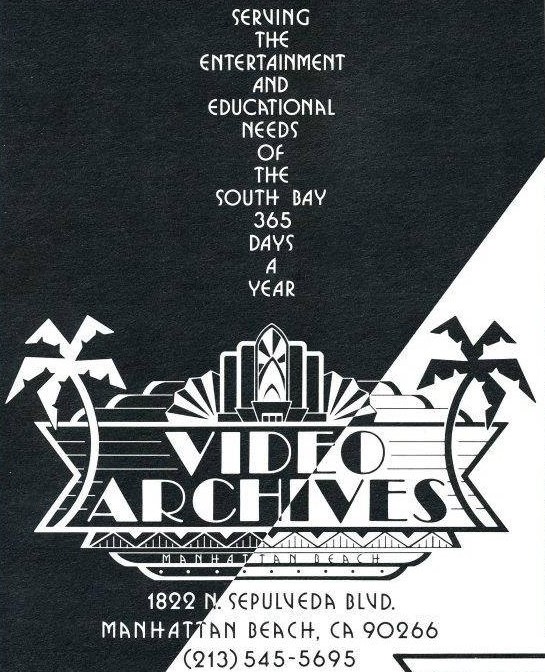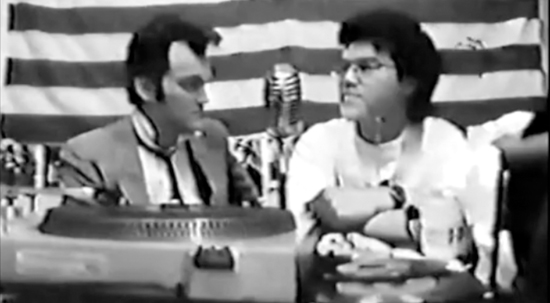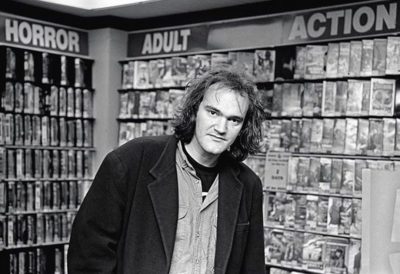 What do the Ku Klux Klan, Quentin Tarantino, surfers and the McMartin preschool have in common? Answer: my hometown of Manhattan Beach.
What do the Ku Klux Klan, Quentin Tarantino, surfers and the McMartin preschool have in common? Answer: my hometown of Manhattan Beach.
Manhattan Beach, CA may not seem like much, and indeed it isn’t. It’s a standard beach community in most respects, indistinguishable from the dozens of other surfer havens dotting the So Cal coast. Look a little closer, though, and you’ll discover some fairly important, if inconspicuous, landmarks.
The Strand Cleaners building, for one, located about a mile from where I grew up, is where the infamous McMartin preschool, where numerous kids claimed to have been molested, was once located. A bit nearer the beach you’ll find a strange-looking park amidst a gaggle of townhouses; this was where a black family was run off the land back in the 1920’s, and which the Ku Klux Clan controlled city council subsequently turned into a park in order to keep them away.
Another landmark, one that should be of particular interest to patrons of this site, is situated on a small stretch of Sepulveda Boulevard, an undistinguished looking mini-mall where THE GREATEST VIDEO STORE IN THE WORLD was located.
Yes, Video Archives, which started in the early eighties, as a hole-in-the-wall located at 1822 Sepulveda, was indeed the greatest video store in the world. Now I’ll grant that all such distinctions are subjective and subject to the whims of memory and nostalgia, particularly in this case, as the business in question has been closed for over nine years. I’ve patronized a number of video stores since VA’s closing that may possibly be better—West L.A.’s Cinefile, Santa Monica’s Vidiots and Vancouver’s Videomatica—but was unable to make a first-hand comparison in any case, so Video Archives remains at the top of my list.
I remember this now-famous establishment vividly: my family, after all, was, according to an overheard comment by one VA’s longtime clerks, “there since day one.” I even recall my customer number: 387.
At the time video rentals were a novelty and most video stores had puny selections, not unlike those of your modern-day Blockbuster chains, which nowadays also have video games and fantasy games. Video Archives, on the other hand, had everything: Hollywood blockbusters, documentaries, foreign films (organized by country, an unheard-of innovation at the time), cult flicks (which had their own wall, another innovation) and the all-important “adults only” section. The place also had a cool big screen TV, where I experienced my first taste of quite a few great films.
An added attraction was the guy who worked there whom we knew as The Tall Guy With the Big Chin. You know him as Quentin Tarantino.
You’re aware, I’m sure, that the one-and-only Quentin Tarantino worked as a video store clerk prior to hitting it big. Video Archives was where he worked. As I remember, he was always amped, plugging any given video with such enthusiasm you felt you had no choice but to rent the damn thing—I specifically remember Tarantino selling my mom on UNFAITHFULLY YOURS (1948) and myself on a James Bond flick (it might have been DIAMONDS ARE FOREVER). After watching the videos, we both agreed it was more fun hearing Quentin T. talk about them!
An early Tarantino film project called MY BEST FRIEND’S BIRTHDAY is currently making the rounds of the bootleg circuit. Much of it was clearly filmed in and around Video Archives during those heady days, and features a number of recognizable faces culled from VA’s employees .
.
The fizzy-haired Rowland was a ubiquitous figure behind the Video Archives counter (he’s the dude Tarantino chats with at the beginning of MY BEST FRIEND’S BIRTHDAY), as was the wise-assed Stevo (who can be seen as one of RESERVOIR DOGS’ four bathroom cops). There was also the big, burly manager Lance, a blond woman whose name I never learned and the “two reds” (twin redheaded gals). One employee I don’t recall, ironically enough, is Roger Avery, Quentin’s longtime buddy who shared the screenwriting Oscar for PULP FICTION and worked at VA alongside him (Avery cast the abovementioned Rowland and Stevo in his 1996 fim DR. STITCH). I understand Mr. Avery was quite the ladies’ man—rumor has it he regularly came onto one of my little sister’s friends.
Most of Video Archives’ principals stayed with the place into the early nineties, when it moved to a bigger location two doors down, at 1808 Sepulveda. Tarantino, alas, quit around this time (nobody told me this, mind you, I just stopped seeing him around). I continued patronizing the store, which managed to stay afloat in the face of overwhelming odds, most notably a Blockbuster Video that around the time of Tarantino’s departure opened two blocks up on the same street (in a depressing reminder of the sad realities of modern-day capitalism, said Blockbuster remained in that spot long after Video Archives had departed).
Not long after that I began hearing about a movie called RESERVOIR DOGS, written by “some guy who worked at Video Archives.” I immediately recognized said VA worker upon seeing the face pictured on the cover of a 1993 issue of LA Weekly profiling the film and its creator.
 At that point Video Archives became RESERVOIR DOGS’ unofficial South Bay publicity resource, as soon everyone in the store was wearing RD tee shirts, RD posters were posted everywhere and televised interviews with Quentin at Cannes seemed to always be playing on the store’s new monitor (the big screen television having gone out with the old location). I recall one clerk, upon seeing Quent interviewed by Roger Ebert on the store TV, laughingly commenting that “Quentin hates Roger Ebert!”
At that point Video Archives became RESERVOIR DOGS’ unofficial South Bay publicity resource, as soon everyone in the store was wearing RD tee shirts, RD posters were posted everywhere and televised interviews with Quentin at Cannes seemed to always be playing on the store’s new monitor (the big screen television having gone out with the old location). I recall one clerk, upon seeing Quent interviewed by Roger Ebert on the store TV, laughingly commenting that “Quentin hates Roger Ebert!”
As RESERVOIR DOGS’ profile grew, so did Video Archives’, to the point that, as manager Lance stated in a later interview, he started to get applications from people who’d already made movies (it usually works the other way around, as Tarantino’s career attests). It would be hard to screw up such a perfect business opportunity, yet somehow VA’s management did so, by abruptly and unexpectedly moving the place to Hermosa Beach, over three miles away, in a crowded area with NO parking.
In this new location Video Archives lasted about two months before, in early 1994, going belly-up. Like quite a few of VA’s patrons I didn’t know about the move, and by the time I found out the place was gone for good. The store’s stock of videos, many of them rare and extremely valuable, was auctioned off amongst VA’s movie-loving staff; I understand Tarantino got most of them.
Thus the greatest video store in the world went out with scarcely a whimper. In the years since, its reputation has grown to near-mythic proportions, with articles on the “now fabled” “rude little video store” in publications like Premiere, Film Threat and Empire, as well as lengthy profiles in the Tarantino bios SHOOTING FROM THE HIP by Wensley Clarkson and QUENTIN TARANTINO: THE MAN AND HIS MOVIES by Jamie Bernard. A former employee has even taken to selling Video Archives paychecks he’s obtained that were made out to and endorsed by Tarantino.
To think: all this about a little video store I patronized for much of my early life. It’s gratifying to think that, unlike the writers of the above-mentioned articles and books, I’ve got firsthand knowledge of this “now fabled” establishment. Unfortunately, I’m also aware that I’ll probably never see its likes again.
